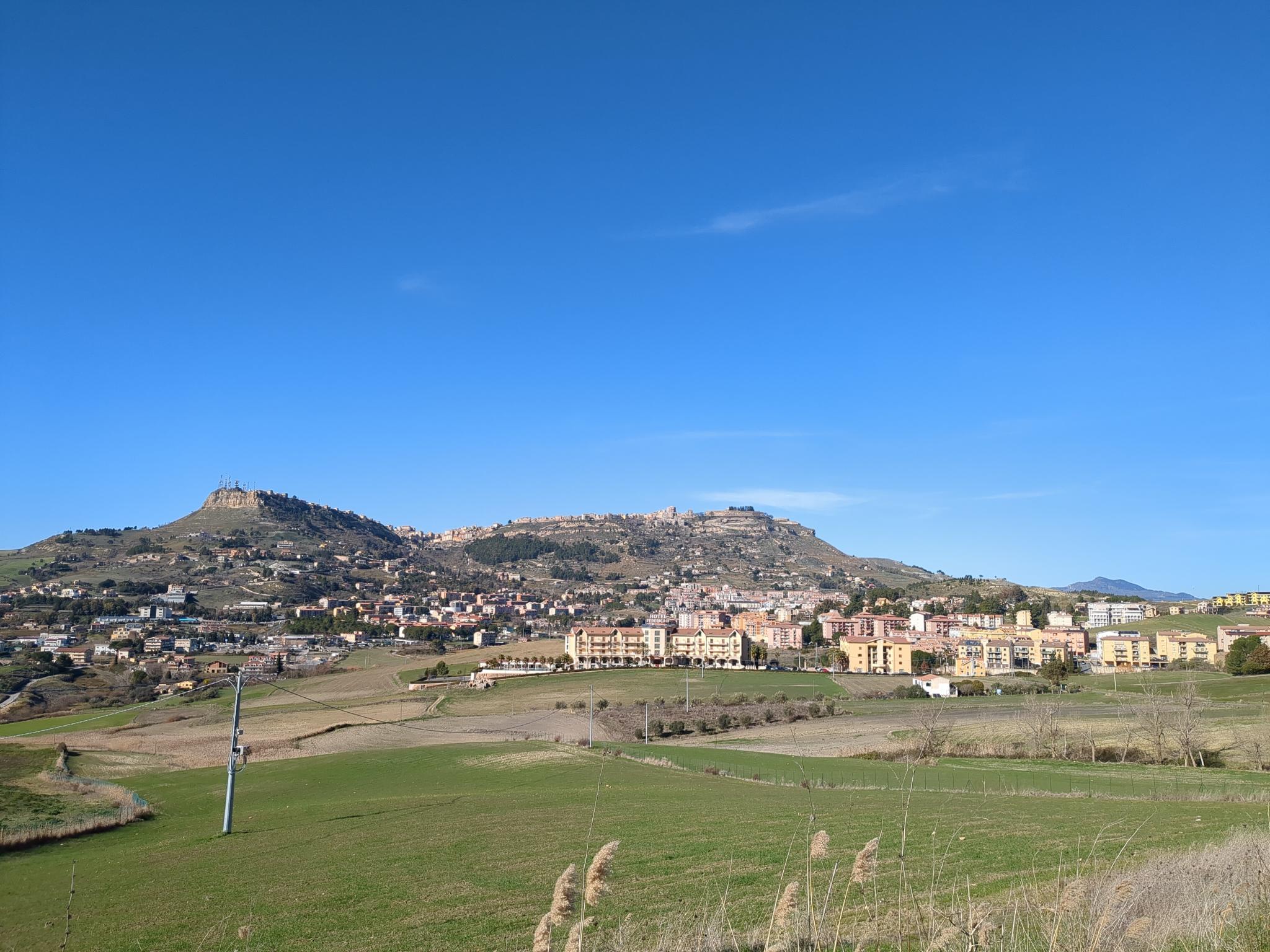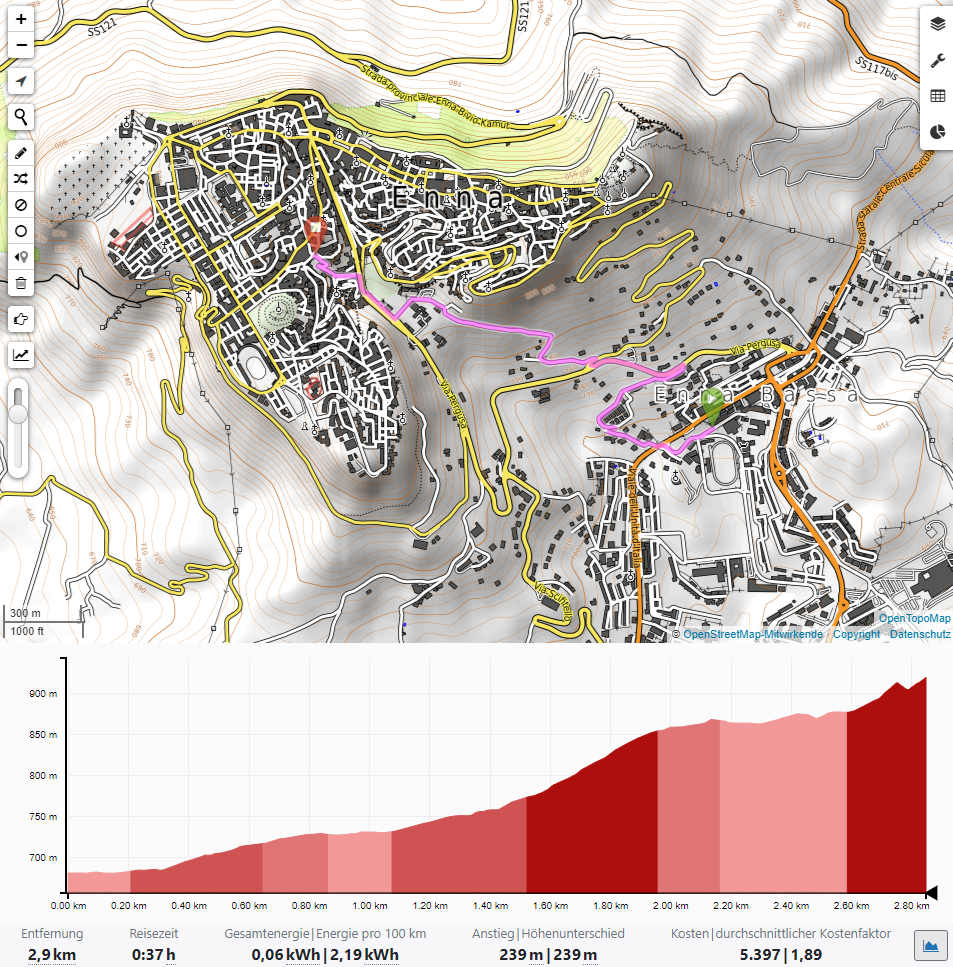
Enna viewed from the south in central Sicily. It is a steep 240 meters ascent to the top of the hill where the old city is located.
In January and February, I cycled around Southern Italy for three weeks. I completely relied on the power of my body to move me and fifteen kilograms of luggage around. One day, while dragging myself up the steep ascent to Enna, a famous hilltop city in central Sicily, I was overtaken by several trucks. They would rush by with roaring engines, carrying roughly 500 times the amount of luggage that I had on my bicycle. But still, they easily climbed all the way up, dropping out of sight after the next turn. What a stark contrast. To carry that amount of cargo I would need 500 round-trips on my bike. It would take me a month with around sixteen daily trips to do the same thing the truck achieves within ten minutes. That’s insane. Energy is so cheap and abundant that we don’t even think about it. And such energy use is not an exception. Every day trucks go up to Enna to deliver such mundane things as bottled water.
Why is this problematic? Our lavish use of energy is having devastating consequences as it is largely based on burning fossil fuels. At a time when there is an urgent need to reduce emissions, we should reduce energy use. This is much simpler than a shift to renewables. Therefore, we need to have discussions about prioritization. Do we really want to spent precious energy on carrying bottled water across the country?
To be clear: This is not about promoting the individual mortification on energy use. I don’t advocate for abandoning trucks and only using human powered devices. I want to raise awareness that our modern way of living has completely detached us from energy on a human scale. Connecting us back and making the hidden costs visible can be a powerful tool in shifting to a lower energy society.
